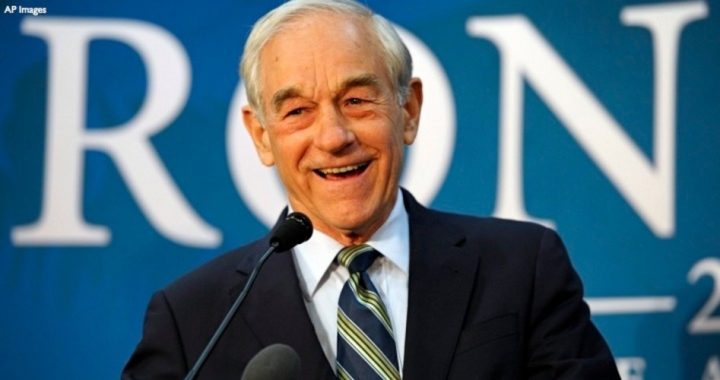
Texas Congressman and Obstetrician Ron Paul “dominated” the Louisiana presidential caucuses April 28, according to the New Orleans Times-Picayune. Paul supporters also out-organized the presumed GOP presidential nominee in caucuses in former Massachusetts Governor Mitt Romney’s home state of Massachusetts, and Paul supporters took over the Alaska Republican Party the same day.
The Times-Picayune reported that “under party rules, Paul is guaranteed at least 17 of the 46 delegates to the convention at which Romney will almost certainly be nominated for president.” The final tally will likely be even stronger, as Paul — who lost popular votes in caucuses states such as Iowa and Minnesota, but emerged with a clear majority of delegates — will likely out-organize remaining rival Romney. Louisiana is also a primary state. Based on their performance in the primary, 10 of the delegates are guaranteed to primary winner and former Pennsylvania Senator Rick Santorum, while five delegates are guaranteed to Mitt Romney (who placed second in the primary).
Romney’s home state of Massachusetts is also a primary state won by the former Governor, so nearly all of the delegates will be pledged to vote for Romney on the first ballot. But that hasn’t stopped Romney’s home-state delegates from really becoming Paul delegates who could abandon Romney on a second ballot at the national convention. According to Seamus Light of PolicyMic.com, in Massachusetts the “Romney” delegates are really Ron Paul delegates. “While all delegates are required to vote for Romney during the first round of the Tampa convention (but not during a second vote), district voters are allowed to choose whoever they want to fill those roles. Thus, there were two camps: the official Romney-approved slate, and the Ron Paul-allied Ronald Reagan Unity Liberty Slate.” Ron Paul’s Ronald Reagan Unity Liberty Slate swept the caucuses.
The Ron Paul movement — labeling it a campaign at this point is far too limiting — also claimed a third victory in selecting new leadership for the Alaska Republican Party April 27. The Alaska GOP convention chose Goldwater Republican Russ Millete as its new chairman in what the Alaska Dispatch described as an “alliance between the tea party and Paulites.” The Alaska Dispatch noted that erstwhile U.S. Senate candidate and Tea Party favorite Joe Miller and his wife spent the day coordinating with the Ron Paul campaign during the successful GOP insurgency.
The Houston Chronicle reported April 28 that Ron Paul continues to draw ever-larger crowds in his presidential campaign and has engaged in a renewed effort to win his home state primary. “Thursday’s rally in the shadow of the LBJ Library at the University of Texas rivaled any crowds Mitt Romney or President Obama could draw at a campaign appearance.” That was an understatement, as Paul’s crowds number in the thousands wherever he has appeared for the last month. Romney has a 30 point lead in polls for the May 29 primary over Paul in a three-way race that also includes 35 percent for Newt Gingrich (who is expected to drop out of the race Tuesday).
The Ron Paul movement remains well-funded, raising $2.6 million in March with $1.78 million in the bank and no campaign debt. The Christian Science Monitor noted that while Mitt Romney has raised far more money in New York (largely from elite New York banks and financial firms) and California, Ron Paul’s small donation-based campaign has raised more money from states across the nation, even among large contributors. Counting only large contributors, the Christian Science Monitor reported April 27 that “Paul outraised Romney in 10 states, including some that will be key battlegrounds in the fall, according to figures compiled by Eric Ostermeier, a political scientist at the University of Minnesota’s Hubert H. Humphrey Center for the Study of Politics and Governance. ‘Ron Paul leads Mitt Romney in large donor itemized fundraising in 10 states, representing all four geographical regions from the northeast (Maine), the South (Arkansas), the Midwest (Iowa, Kansas, Minnesota, North Dakota, Wisconsin) and the West (Alaska, Hawaii, New Mexico),’ writes Mr. Ostermeier on his Smart Politics blog.”
As Ron Paul’s hope for winning the GOP nomination has gradually faded, his movement’s influence in the Republican Party on the state and national level has multiplied geometrically. His much smaller and unsuccessful 2008 presidential campaign spawned a small network of state and local GOP candidates, some of whom were elected and had a role in inspiring the Tea Party movement. Paul is no longer alone in Congress since the 2010 cycle netted the election of acolytes in Congress that included his own son Rand Paul as Kentucky Senator and ideologically similar freshmen in the House such as Michigan’s freshman Congressman Justin Amash. The 2012 election season promises a much bigger slate of Ron Paul-inspired liberty candidates, many of whom won’t have to struggle against their state GOP establishment leadership, as those in the 2010 cycle had to fight.



